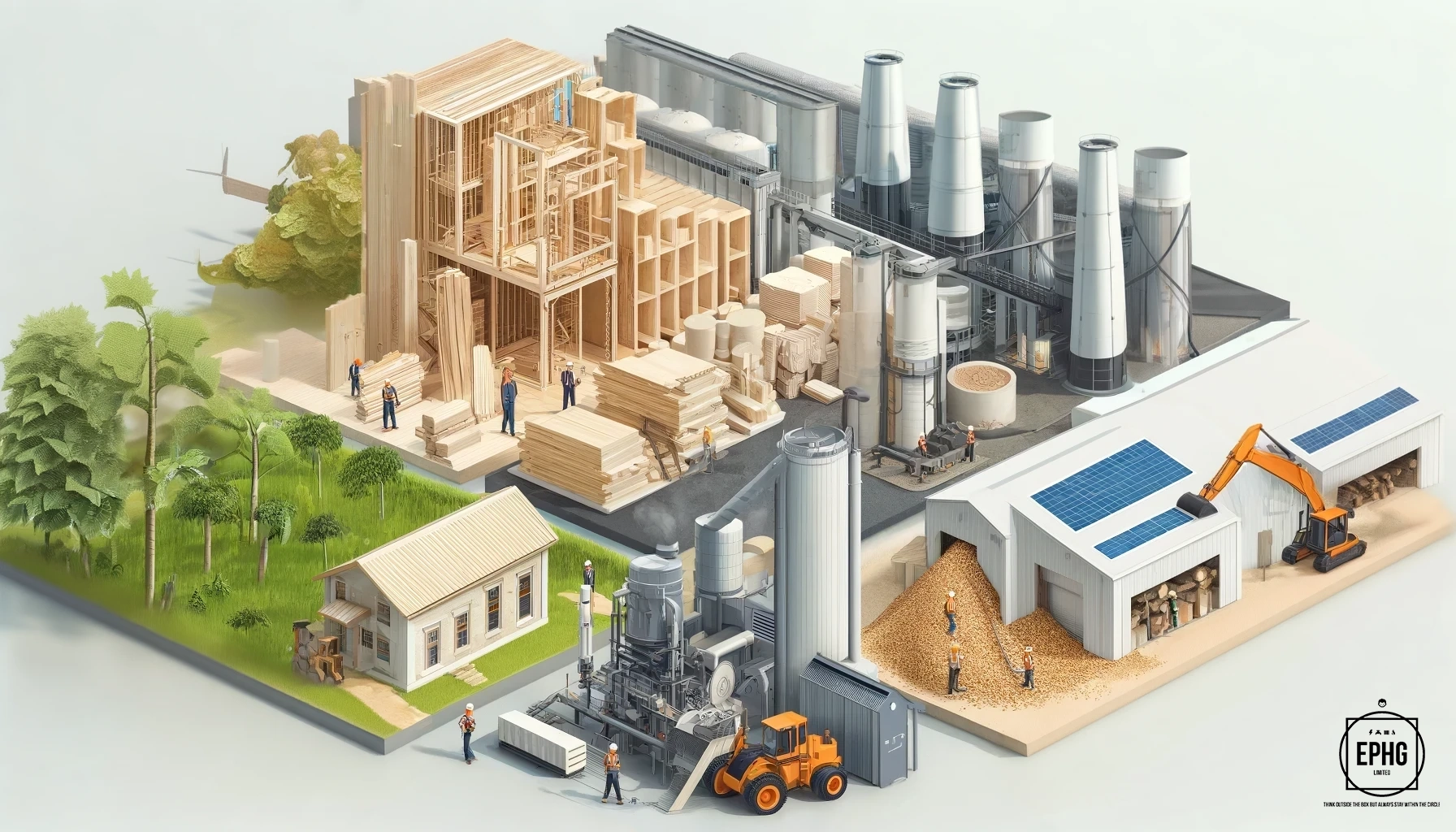The Role of Wood: Past, Present, and Future
Formation of Wood
Wood is formed from the periodic elements carbon (C), hydrogen (H), and oxygen (O), among others. Photosynthesis enables plants to convert carbon dioxide and water into glucose, which forms cellulose and lignin, the building blocks of wood. Cellulose provides wood with its tensile strength and flexibility, while lignin imparts rigidity and water resistance.
Other elements, such as nitrogen (N), calcium (Ca), and magnesium (Mg), are present in trace amounts and play roles in the biochemical processes within the plant, affecting the wood's characteristics. Together, these compounds and elements create the complex structures that give wood its unique properties, allowing it to serve as a versatile and durable material.
Historical Uses of Wood

Historically, wood has been fundamental for construction, fuel, and artifacts. Wooden structures and boats relied on wood's strength and availability, making it a preferred material in ancient architecture and shipbuilding. Firewood and charcoal provided essential fuel for heating, cooking, and metalworking.
Various tools, furniture, and artwork were crafted from different wood types, each prized for its unique properties. For instance, hardwoods like oak and walnut were favored for their durability in furniture making, while softwoods like pine and cedar were ideal for carving and paneling. In religious and cultural contexts, wood was used to create ceremonial objects, musical instruments, and sculptures that hold significant historical and artistic value.
Modern Applications of Wood

Today, engineered wood products such as plywood, fiberboard, and oriented strand board are extensively used in both residential and commercial construction, as well as in furniture making due to their strength and versatility. The pulp and paper industry heavily relies on cellulose extracted from wood to manufacture a wide array of paper products, including printing paper, packaging materials, and hygiene products.
Additionally, extractives from wood are utilized to produce resins, adhesives, and essential oils, which are integral in chemical industries for creating products ranging from varnishes to fragrances. In the realm of bioenergy, wood pellets are increasingly recognized as a sustainable alternative to fossil fuels. These pellets are burned to generate heat and electricity, offering a renewable energy source that helps reduce greenhouse gas emissions and reliance on non-renewable resources.
Nature and Applications of Resin from Wood

Resin, a viscous substance extracted from wood, plays a crucial role in various industrial applications due to its adhesive and water-resistant properties. Naturally occurring in trees as a protective mechanism against pests and injuries, resin is collected through tapping, which involves making strategic incisions into the tree bark to allow the resin to flow out. Once harvested, this organic compound is refined and processed to produce a diverse range of products including varnishes, adhesives, lacquers, and even some types of inks. Resins derived from wood are especially valued in the making of high-quality furniture finishes and protective coatings, contributing to their aesthetic and durability. In the construction industry, wood resins are essential for creating strong, reliable adhesives that are used in engineered wood products like plywood and particle board, enhancing structural integrity and longevity.
The Significance of Wood Pellets in Sustainable Energy

Wood pellets, a form of bioenergy derived from compressed organic matter or biomass, are a cornerstone of sustainable energy solutions. Made primarily from sawdust, wood chips, and other by-products of the lumber industry, these pellets are used as a renewable substitute for fossil fuels in heating systems and power generation. Their uniform size and high density allow them to burn more efficiently and cleanly than traditional wood forms. This efficiency, coupled with the carbon-neutral nature of wood pellets, makes them an increasingly popular choice in efforts to reduce reliance on coal and natural gas, thereby contributing to the reduction of greenhouse gas emissions and promoting environmental sustainability.
Future Prospects of Wood

Wood-derived nanocellulose is emerging as a groundbreaking material, showing immense promise for creating high-strength composites, transparent films, and innovative biomedical applications such as wound dressings and drug delivery systems. Due to its renewable nature, wood continues to play a pivotal role in sustainable architecture and eco-friendly manufacturing practices. It is increasingly used in green building projects for its carbon-neutral properties and minimal environmental footprint.
Furthermore, research into lignin, a major component of wood, is advancing the development of bio-based plastics and advanced polymers. These materials are poised to revolutionize industries by offering sustainable alternatives to petroleum-based products, thus opening the door to innovative, environmentally friendly materials that could transform technology and product design in the coming years.
The Role of Trees in Quantum Computing and Data Storage

In the near future, trees may play a pivotal role in the field of quantum computing and serve as biological memory banks, a concept that bridges biology with advanced technology. Scientists are exploring the potential of genetically engineered trees whose cellular structures can interact with quantum states, effectively storing data. This biotechnological innovation leverages the natural growth patterns and longevity of trees, proposing a sustainable and energy-efficient alternative to traditional silicon-based data storage. These 'quantum trees' could harness the intrinsic properties of wood fibers to process and store vast amounts of information, offering a groundbreaking approach to data handling and computational processes in an eco-friendly manner.













